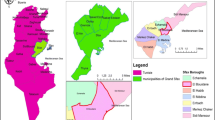Abstract
The twentieth century saw a dramatic increase in the production of urban solid waste, reflecting unprecedented global levels of economic activity. Most of the urban cities are facing problems of solid-waste collection, treatment, and disposal due to increasing population, rapid urbanization, industrialization, and commercialization. Learning lessons from the failures of the solid-waste management systems, it is felt that a systematic approach of solid-waste management is a desirable solution, which can be achieved only by a strategic planning approach for achieving a clean, healthy, and sustainable environment. Effective planning of solid-waste recycling programs is a substantial challenge for the current solid-waste management systems in developing countries like India. Due to the rapid depletion of landfill space and the continuing delay in construction programs of municipal incinerators, solid-waste management strategies have to be reorganized in the light of the success of recycling, recovery, and reuse of secondary materials. One of these efforts is how to effectively allocate recycling drop-off stations of appropriate size and how to design efficient collection-vehicle routing and scheduling programs in the solid-waste collection network. The present paper describes a multi-objective evaluation of the trade-off between the number and size of drop-off stations, population covered in the service network, average walking distance to drop-off stations by the population, and the distance traveled by collection vehicles. It is illustrated by the use of algorithms in a geographical information system (GIS) platform. A GIS-based model is proposed for the design of solid-waste system considering the waste generation, allocation, recycling options, and locating drop-off stations.











Similar content being viewed by others
References
CPHEEO (2000) Manual on solid waste management. Central Public Health and Environmental Engineering Organization, New Delhi
ESRI (1994) Understanding GIS—the Arc/Info method. Environmental Systems Research Institute, CA
Everett JW, Modak AR, Jacobs TL (1993) Optimal scheduling of composting, recycling and landfill operations in an integrated solid waste management system. J Manage Technol 21(9):16–26
Jacobs T, Everett JW (1992) Optimal scheduling of landfill operations incorporating recycling. J Environ Eng 118(3):420–429
Lund J (1990) Least-cost scheduling of solid waste recycling. J Environ Eng 116:182–197
Tchobanoglous G, Theisen H, Vigil S (1993) Integrated solid waste management—engineering principles and management issues. McGraw Hill Inc, New York
Author information
Authors and Affiliations
Corresponding author
Rights and permissions
About this article
Cite this article
Gautam, A.K., Kumar, S. Strategic planning of recycling options by multi-objective programming in a GIS environment. Clean Techn Environ Policy 7, 306–316 (2005). https://doi.org/10.1007/s10098-005-0006-7
Published:
Issue Date:
DOI: https://doi.org/10.1007/s10098-005-0006-7




